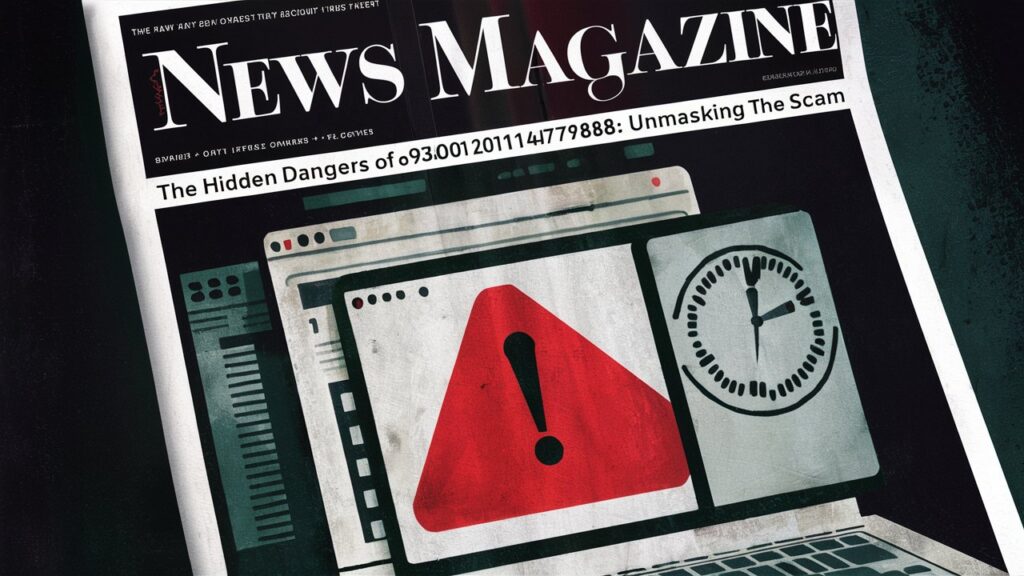Scammers are becoming increasingly sophisticated, and one of the latest tricks in their playbook involves using fake USPS tracking numbers, such as 9300120111410471677883. This number is not tied to any accurate shipment but is instead a tool in a devious phishing scheme designed to trick unsuspecting individuals into divulging personal information.
The Mechanics of the Scam
When you receive a message featuring the tracking number 9300120111410471677883, it often arrives as an email or text message. The message claims that a package addressed to you couldn’t be delivered due to an incorrect address. This initial alert can easily throw anyone off guard, especially those who frequently shop online or are awaiting deliveries.
Identifying the Fake Tracking Number
A critical step in avoiding this scam is recognizing the signs of a fake tracking number. Genuine tracking numbers usually link directly to the carrier’s official website. However, the number 9300120111410471677883 will take you to a phony site that resembles the USPS website. This fake site is the scammer’s trap, and entering your personal information here is the goal.

Spotting the Red Flags
Several red flags can help you identify and avoid falling victim to this scam. First, be cautious of unexpected packages. If you weren’t anticipating a delivery, treat any notification with suspicion. Additionally, scam messages often use generic greetings such as “Dear customer” rather than addressing you by name, indicating that the message is not personalized and is likely a mass phishing attempt.
The Pressure Tactic
Scammers frequently create a sense of urgency to pressure their targets into immediate action. They might claim that immediate action is required to correct the address and ensure the delivery of the package. This urgency is designed to prevent you from overthinking the request and acting on impulse.

Examining the URL
Before clicking any links in a suspicious message, scrutinize the URL. The scammer’s fake website might look almost identical to the official USPS site, but subtle differences in the URL can reveal its true nature. Official USPS URLs will always end in .usps.com, so any variation from this should be a significant warning sign.
Personal Information Requests
A legitimate delivery service like USPS will never ask for sensitive personal information such as your Social Security number, bank details, or passwords via email or text message. If the message requests this information, it indicates a scam.
Protecting Yourself Online
Always go to the official USPS website to track your packages and safeguard yourself from scams involving fake tracking numbers like 9300120111410471677883. Never follow links provided in unsolicited messages. Additionally, maintaining up-to-date antivirus software and being cautious with your personal information online can give an extra layer of security.
Also Read: Unveiling the World of “iphone:5e5ylhajjw4= wallpaper”
Reporting the Scam
If you receive a message with the tracking number 9300120111410471677883, report it immediately. You can forward the phishing email to the USPS at spam@uspis.gov or report the scam to the Federal Trade Commission (FTC) at ftc.gov/complaint. Reporting helps authorities track and shut down these scams, protecting others from falling victim.
Staying Informed
Education and awareness are your best defenses against scams. Familiarize yourself with common phishing tactics and stay informed about the latest scam alerts from trusted sources like the USPS and the FTC. Being vigilant can prevent you from becoming a victim.
The Psychology of Scams
Understanding the psychology behind scams can also be beneficial. Scammers exploit common psychological triggers such as fear, urgency, and curiosity. By recognizing these tactics, you can better prepare to respond appropriately when facing potential scams.
Social Engineering
Scams like the one involving 9300120111410471677883 are a form of social engineering. They manipulate individuals into divulging confidential information. Awareness of social engineering techniques can help you recognize and resist these manipulative tactics.
Verifying Authenticity
Whenever you receive a suspicious message, please take a moment to verify its authenticity. Contact the company directly using contact information from their official website, not the contact information provided in the suspicious message. This step can save you from potential fraud.
Enhancing Cybersecurity
Strengthening your cybersecurity practices can further protect you from scams. Use strong, unique passwords for different accounts, enable two-factor authentication where possible, and be cautious about the information you share online.
Educating Others
Sharing your knowledge about scams like those involving 9300120111410471677883 can help protect others. Talk to your friends and family about common scams and how to avoid them. The more people are informed, the less likely they are to fall victim.
The Role of Technology
Technological advancements can also aid in protecting against scams. Many email providers and phone carriers offer spam and scam detection services. Utilize these tools to filter out potential scam messages before they reach you.
Staying Skeptical
A healthy dose of skepticism can be a powerful tool in avoiding scams. Always question unexpected messages, especially those that create a sense of urgency or ask for personal information. Taking a moment to think critically about the message can prevent hasty decisions that lead to fraud.
The Importance of Vigilance
Constant vigilance is crucial in the fight against scams. Scammers continually evolve their tactics, so staying alert and informed is essential. Review your security practices regularly and stay updated on new scam techniques.
Also Read: Drawing:cul23ybyzfm= basketball
Community Support
Being part of a community that shares information about scams can provide additional protection. Many online forums and social media groups are dedicated to sharing scam alerts and advice. Joining these communities can keep you informed and supported.
Conclusion: Stay Safe
The tracking number 9300120111410471677883 is a prime example of scammers’ innovative tactics to deceive people. You can protect yourself and others from falling victim to these fraudulent schemes by staying informed, cautious, and vigilant. Always verify the authenticity of messages, report suspicious activity, and educate those around you to create a safer online environment for everyone.

Pingback: Exploring the Game with ID "game:9uubozj3enq= Roblox"
Pingback: 9300120111410471677883: A Comprehensive Guide
Pingback: 9300120111410471677883: A Cautionary Guide
Pingback: Recurbate: A Comprehensive Guide -
Pingback: Scam Likely: Understanding the Warning Sign
Pingback: Pedrovazpaulo Executive Coaching: A Deep Dive into a Niche Mastery